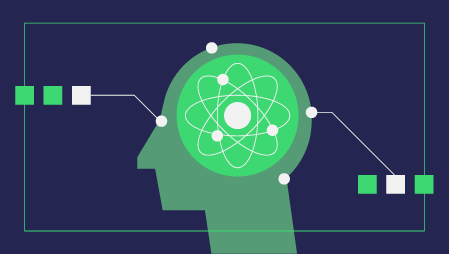Everybody is discussing Artificial Intelligence (AI) and machine learning, and some legal professionals are already leveraging these technological capabilities.
AI is not the future expectation; it is the present reality.
Aside from law, AI is widely used in various fields such as transportation and manufacturing, education, employment, defense, health care, business intelligence, robotics, and so on. Artificial intelligence is just commencing its own concerning its use by lawyers and within the legal industry. AI also presents a wide range of legal challenges – especially in areas such as regulatory compliance, liability, risk, privacy, and ethics.
AI in the legal sector debuted with the IBM Watson-powered robot ROSS, the world’s first AI lawyer, which solved research inquiries by mining data and deciphering trends and patterns.
In the late 1600s, the German attorney G.W. Leibniz theorized that machines would someday use a binary logic system to calculate numbers, and he envisioned a partnership between artificial intelligence and lawyers.
According to the 2020 Future Ready Lawyer Survey, by Wolters Kluwer, 58% of legal departments expect AI to affect their organization over the next three years.
Artificial intelligence companies are still working on ways to develop technology that can handle time-consuming activities in a variety of industries with greater speed and precision. In the legal profession, AI has already found its way into supporting lawyers and clients alike.
AI on the way to empower legal services delivery
The world over, AI is transforming the way we work, conduct business, perform legal processes, and manage clients. AI is also promising for predicting the outcomes of cases, getting documents ready in seconds by automation, and preparing invoices for clients, among other things. The legal industry professionals can easily do a lot of the contract drafting work with the advancement of technology. Consequently, the clerical work done by paralegals and lawyers can and should be reduced to a great extent. A reduction of the workload will help law firms in the deduction of expenses on paralegals and research assistants.
As just an example, in 2017, the Investment Banking Firm, JPMorgan, announced COiN for Contract Intelligence. This program saves up to 360,000 hours of a lawyer’s time every year by interpreting commercial-loan agreements.
AI’s current (and future) legal applications can pave a great way for lawyers and the entire legal industry in many ways. Some of these applications are:
Due diligence with AI
Out of numerous tasks that lawyers perform for their clients, one of the most important tasks is due diligence, i.e., to validate facts and data on behalf of their clients, as well as a complete evaluation of the legal status of their case. This due diligence approach is necessary for adequately and properly advising clients on their options and appropriate actions.
AI-enabled legal solutions are there in the market, which provide accurate due diligence contract review almost 40% faster by searching, filtering, highlighting, and extracting relevant legal content for analysis.
Automation of lower-level tasks
AI-based software allows law firms to automate lower-level tasks like billing and time-tracking, freeing time for attorneys to focus on complex analysis and client interaction.
AI greatly enhances an attorney’s ability to research, advise, and serve their clients. Some large firms already use AI-based tools to enhance their practices.
Automation of creative processes
Not only low-level or clerical tasks, but AI can also help automate creative and case-specific tasks. It includes legal document creation, invoice management, and others. With automated legal document workflows, lawyers can cut down time spent passing documents back and forth, or notifying the relevant parties of their next steps. And, automated invoice management can reduce the chances of duplicate invoices, ensure 2-way 3-way matching, and overall, optimize functions of accounts payable.
Providing insights using AI
AI-enabled legal services can provide accurate insights from raw data, which is a tedious, time-consuming, and error-prone manual process for lawyers and attorneys.
AI-enabled legal analytics enables legal teams to look for trends and patterns by using data from previous case law, win/loss statistics, and a judge’s history. All in all, AI legal software can predict risks involved in cases and generate results that forecast litigation outcomes.
Enhanced and accurate searches
AI offers decent search capability. For example, AI can easily identify changes in the tone of email communications. It also offers immense help in contract review and analysis for due diligence. AI can look for code words used, and analyze the intent behind them. To be precise, AI may examine laws and regulations, offer several legal perspectives in cases, and alert legal departments to comparable cases.
Efficient contract management
The law touches every aspect of business functions across the globe and across industries. Every single function that companies perform, be it sales, procurement, purchases, mergers, acquisitions, partnerships – is all being done via legally enforceable contracts. Legal firms and departments can gain significant insights by applying AI to evaluate existing contractual obligations, allowing diverse teams to enhance their processes. With AI-enabled contract management software:
- Sales teams can keep track of contract deadlines and let them know when contracts are up for renewal so they can capitalize on income opportunities through upsells.
- Procurement teams can stay on top of the contact details and vendor performances, and accordingly, negotiate contracts as and when they are due.
- Legal teams can effortlessly monitor and manage contractual obligations.
- Finance teams can, beforehand, know and predict the revenue associated with the contracts, and prevent any possible revenue leakage.
Over to You
That said, Legal AI is not a magic wand, nor does it replace the vital role of lawyers. The law remains complex, and even though intelligence can be taught, subtleties can escape the machine. The key is to adopt AI technology and automate your manual processes in order to become more productive; not adopt AI simply for the sake of it. AI will no longer be a myth or an unattainable dream, but a realistic and innovative technology that you can easily implement within your legal department when you are ready to drive efficiency and reduce costs.





